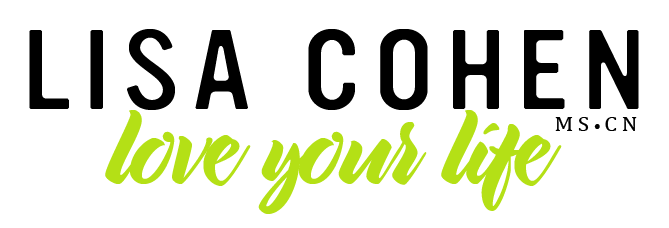How To Improve Your Gut Health
/Hippocrates said, “All disease begins in the gut.”
And while this may sound like an over simplification, more and more research shows that our gut (digestive system) has a bigger role in many diseases than we used to think. And we're not just talking about heartburn, constipation, diarrhea, IBS, IBD, etc. We're talking about all kinds of issues like allergies, pain, mood disorders, and nutrient deficiencies.
There are a lot of reasons for this. Our gut is the portal to the outside world. It's here where we take in disease-causing bacteria, viruses, and parasites. We also take in nutrients (and toxins) through our gut. The nutrients we ingest and absorb are the building blocks of every single part of our body. We're just learning the connections between our gut and other areas of our body, like our brain (have you heard of "the gut-brain axis"). Not just our gut per se; but, its friendly resident microbes too. These guys also have newly discovered roles in our gut health and overall health.
So, let's talk about the roles that our gut and our gut microbes play in our overall health. Then I'll give you tips to improve your gut health naturally.
Our gut’s role in our overall health
Our gut’s main role is as a barrier. To let things in that should get in, and to keep things out that should stay out. Think of “absorption” of nutrients as things we want to let in; and “elimination” of waste as things we want to pass right through and out.
This seemingly simple role is super-complex! And it can break down in so many places.
For one thing, our guts can "leak." Yes, like a long tube with holes in it, it can allow things to get into our bloodstream/bodies that can wreak havoc (bacteria, undigested food, and toxins). You name it, whatever you put into your mouth can be absorbed by your gut and get into your bloodstream, even if it's not supposed to. And when your gut wall gets irritated, it can "leak." When this happens, you get inflammation, which is a starting point for many diseases that don't seem linked to the gut but have a sneaky connection there.
FUN FACT: About 70% of our immune system lives in and around our gut.
A healthy gut is not a leaky gut. It maintains its barrier and shuttles things through to be eliminated. Maintaining a healthy gut barrier is the first pillar of gut health.
The second main part of your gut are the billions of friendly health-promoting microbes. Gut microbes help us digest and absorb nutrients. They fight off disease-causing microbes, make some vitamins for us, and have all kinds of other health benefits, like mental health benefits, reducing inflammation, and stabilizing blood sugar.
So, keeping your gut microbes happy is the second pillar of gut health!
How to improve gut health
There are a lot of natural ways to improve gut health. Let’s start with what to stop. It’s always best to eliminate the cause, so let’s stop giving our guts junk to deal with. How about eliminating added sugars, processed foods, and alcohol? Try that for a few weeks, and you may be amazed at how much better your body (and gut) feels.
You may also want to eliminate other gut irritants. Dairy and grains contain common compounds known to irritate some people’s guts. Sometimes you only need to eliminate them for a few weeks to see if it makes a difference for your health.
By eating nutrient-dense foods, we allow ample macro- and micro-nutrients into our gut to maximize the chance for absorption. These nutrients help our bodies build and repair our gut, and every other body part as well. Some of the most nutrient-dense foods include dark leafy greens, colourful fruits and veggies, liver, and fish.
The second pillar of gut health is our microbes. By ingesting probiotic-rich foods and drinks, we can help to replenish our gut microbes. These are found in fermented foods like kombucha, kefir, miso, sauerkraut, and kimchi. Make these a part of your daily diet.
Whole foods are full of gut-friendly fiber. Not eating enough fiber increases the risk of heart disease, cancer, diabetes, and obesity. Fiber plays lots of roles in our gut, including whisking away some of those pesky bad bacteria and toxins so they can be eliminated. Fiber also helps to feed our friendly resident microbes that help us absorb and digest our food better. What foods have a lot of fiber? Fruits, vegetables, nuts, seeds, and even cacao.
And don’t forget the uber-important lifestyle factors like getting enough sleep, stressing less, and getting the right amount (and intensity) of exercise for you. It’s easy to forget some of the simple, but key links there are between what we do with our bodies and how well they function.
Conclusion
The function of your gut is key to your overall health. There are two pillars of gut health: maintaining a good barrier and maintaining healthy gut microbes.
The main ways to improve both of these naturally is by eating nutrient-dense whole foods. Foods filled with nutrition, probiotics, and fiber. And eliminating common gut irritants like added sugar, processed foods, and alcohol.
Recipe (Probiotic-rich): Fermented Carrots
For best results you will need Fermenting Jars or "fermenting weights", to keep the carrots submerged in the brine.
Serves 12
- 1 L warm water
- 4 tsp salt
- 4 carrots, medium, peeled, sliced
- 1 clove garlic, smashed (optional)
Instructions:
Make a brine by dissolving the salt in water.
Place carrots into a clean canning jar, packing them in tight. Make sure to leave about 1 inch of head space at the top.
Fill the jar with brine, making sure to cover the carrots completely. Weigh the carrots down to make sure they don't float (you can order fermenting jars on the link above, or use a "fermenting weight")
Close the jar and let it sit at room temperature for 1-4 days. The longer it sits, the more the flavor will develop. Feel free to open and taste.
Serve & enjoy as a side dish or snack
References:
https://authoritynutrition.com/does-all-disease-begin-in-the-gut/
http://www.precisionnutrition.com/all-about-nutrition-gut-health
http://neurotrition.ca/blog/your-gut-bugs-what-they-eat-and-7-ways-feed-them























